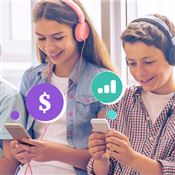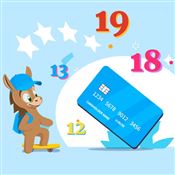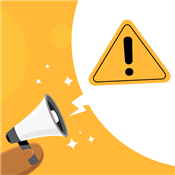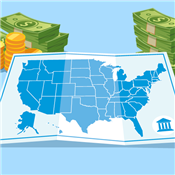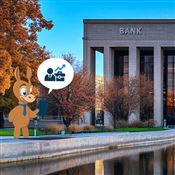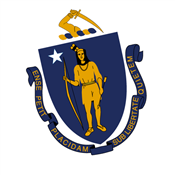Best Bank for 18 Year Olds
Opening a bank as an 18-year-old is one of the best ways to start learning about money early. But with all your options, where do you even start?
 |
Here are the best bank accounts for 18-year-olds:
- Chase: best overall
- Bank Of America: for money management programs
- Capital One: for money-savvy teens
- Copper: for best educational tools
- Wells Fargo: for best college campus programs
- U.S. Bank: for easy teens checking account
- Axos Bank: for variety of accounts
- Quontic: for unique banking rewards
- MPH Bank: for high savings interest
When it comes to bank accounts, the earlier you start, the better. The problem is that there are so many options to choose from.
To help you weigh out your options, here's a list of some of the most popular accounts for 18-year-olds.
Yes, most banks will allow you to open a bank account on your own at 18 years old. If you're younger, you may need to open a joint account with a parent or legal guardian.
Best Bank Accounts for 18-Year-Olds
Banking doesn't have to be hard, especially if you're just starting out. The bank account should be convenient to open, easy to use, and have exclusive benefits.
With that, here are the best bank accounts for 18-year-olds.
Chase for The Best Overall
Chase is one of the biggest banks in the US. It is a great place to start if you're opening a bank account for the first time.
The Chase College Checking account is made specifically with students in mind.
What we like about Chase:
Chase has one of the highest-rated mobile apps in the country. It includes features like Autosave, which will help you grow your savings by setting goals and creating spending rules.
The app includes customizable alerts, online check deposits, financial management content, bill payments, Zelle integration, and more.
With 4,700 branches and more than 15,000 ATMs around the country, Chase is a great option for those going away for college.
What we don't like:
The Chase College Checking account doesn't let you earn interest on your savings. This means your money stays stagnant after you deposit it.
If you use non-Chase ATMs, you'll be charged:[1]
- $3 fee per withdrawal at a non-Chase ATM in the U.S. and the U.S. territories. $5 fee per withdrawal at a non-Chase ATM outside of the U.S. and the U.S. territories. Surcharge Fees from the ATM owner/network still apply. U.S. territories include American Samoa, Guam, the Northern Mariana Islands, Puerto Rico and the U.S. Virgin Islands.
These extra fees could be a pain if you don't have any Chase-supported ATMs nearby.
- Have electronic deposits made into this account totaling $500 or more, such as payments from payroll providers or government benefit providers, by using (i) the ACH network, (ii) the Real Time Payment or FedNow network, or (iii) third party services that facilitate payment to your debit card using the Visa® or Mastercard® network
- Keep an average ending day balance of $1,500 or more in your checking account.
Bank Of America for Money Management Programs
Another titan of US banking, Bank of America is a great place to start if you're looking to open your first account.
They offer the Bank of America Advantage SafeBalance Banking® account which waives all monthly fees for those under 25.
What we like about Bank of America:
The Bank of America has two programs to help students save and learn at the same time:
- Keep the Change Program - This program rounds up all your debit card transactions to the nearest dollar and transfers the difference from your checking to your savings account.
- Better Money Habits Program - In partnership with Khan Academy, this program offers financial courses and educational materials across a wide variety of topics.
They also have thousands of financial centers and ATMs, making them easily accessible.
What we don't like:
The Bank of America has an out-of-network ATM fee of $2.50 each within the U.S. and $5.00 each outside the U.S.[2] This could add up and eat into your money if you don't have a Bank of America ATM nearby.
The Bank of America Advantage SafeBalance Banking account also doesn't offer interest on your savings, keeping your money stagnant whenever it's not in use.
Bank of America Advantage Banking - Up to $500 Cash Offer
- The cash offer up to $500 is an online only offer and must be opened through the Bank of America promotional page.
- The offer is for new checking customers only.
- Offer expires 1/31/2026.
- To qualify, open a new eligible Bank of America Advantage Banking account through the promotional page and set up and receive Qualifying Direct Deposits* into that new eligible account within 90 days of account opening. Your cash bonus amount will be based on the total amount of your Qualifying Direct Deposits received in the first 90 days.
Cash Bonus Total Qualifying Direct Deposits $100 $2,000 $300 $5,000 $500 $10,000+ - If all requirements are met 90 days after account opening, Bank of America will attempt to deposit your bonus into your new eligible account within 60 days.
- Bank of America Advantage SafeBalance Banking® for Family Banking accounts are not eligible for this offer.
- Additional terms and conditions apply. See offer page for more details.
- *A Qualifying Direct Deposit is a direct deposit of regular monthly income – such as your salary, pension or Social Security benefits, which are made by your employer or other payer – using account and routing numbers that you provide to them.
- Bank of America, N.A. Member FDIC.
Capital One for Money-Savvy Teens
Capital One offers options for teens looking to get started early, parents who care about their child's finances, and both looking to create a joint account.
They have the MONEY Teen Checking Account which comes with a highly-rated mobile app. You'll be able to manage your finances, track your spending, and contact 24/7 customer support wherever you are.
With nearly 300 branches and 70,000+ fee-free ATMs nationwide, you'll always have easy access to your money.
Capital One: MONEY Teen Checking Account
- Minimum Deposit to Open: $0
- Balance Requirement: $0
What we like about Capital One:
Capital One has budgeting tools that will help you manage your finances more conveniently.
With their checking account, your total balance is divided into two categories: Spendable and Set Aside.
This makes it easy for anyone to save money and manage their spending.
Capital One's MONEY Teen Checking Account also comes with a debit card (featuring parental controls), which is a huge step towards financial independence.
Though it does not have a competitive APY, the account allows young adults to still earn interest on their money.
What we don't like:
Access to their customer service via telephone is limited. You might experience a significant wait before reaching a customer service representative.
The hold times when contacting Capital One can be quite lengthy, which can be frustrating, especially when it involves your finances.
Copper for Best Educational Tools
Copper is a fintech company that provides financial wellness and education.
They provide a ton of educational tools and resources to help teens become financially independent.
This is perfect for parents looking to teach their children money management skills at an early age.
What we like about Copper:
The Copper account includes everything a young adult will need to save and manage expenses. They also have an app with interactive and educational tools for teens to learn more about finances.
Copper Earn gives users the chance to earn money while gaining financial literacy. This feature not only offers financial incentives but also educates users about the value of money. This'll help teens and young adults get an even bigger head start on their future.
What we don't like:
Copper doesn't have any physical locations and there is no publicly listed customer service phone number.
Wells Fargo for Best College Campus Programs
With over 5,200 branches and 11,000+ ATMs across the country, Wells Fargo is one of the biggest banks in the US.
The Wells Fargo Clear Access Banking account is designed for lower balances, making it a perfect starting point for young adults.
The account has a service fee of $5 per month. However, it can be waived if the account holder is between the ages of 13 and 24 or if the account is linked to one of the cards from the Wells Fargo Campus Card program.
What we like about Wells Fargo:
The Wells Fargo Campus Card Program is designed specifically for students. They have perks and benefits like waived monthly fees, and a maximum of 4 free cash withdrawals at non-Wells Fargo ATMs.
They also have the CollegeSTEPS program which gives students access to online resources on money-related topics.
They can learn things like how to manage money, plan and pay for college, understand credit, and more.
Typically, student accounts will automatically convert into regular checking accounts once you graduate. Remember that this may mean you have to pay monthly fees once it converts.
What we don't like:
The Wells Fargo Campus Card program is only available in 18 participating schools in the country.[3] If your school isn't part of the list, you won't have access to its perks.
There are also no ATM fee reimbursements if you aren't part of the Campus Card program, which means you can be charged up to $5 for transactions made via non-Wells Fargo ATMs.[4]
U.S. Bank for Easy Teens Checking Account
With over 2,000 branches nationwide and more than 4,700 ATMs, U.S. Bank is another great option for teens looking to get a head start.
Their Bank Smartly Checking account is free and has special perks for college students. It includes waivable monthly maintenance fees and 4 free transactions on non-U.S. Bank ATMs per statement period. You'll also enjoy complimentary access to Greenlight's debit card and money app.
U.S. Bank Smartly Checking for Students
- Minimum Deposit to Open: $25
- Balance Requirement: $0
- Perks: $0 fees at first 4 non-U.S. Bank ATM transactions per statement period; $0 overdraft fees when overdrawn $50 or less
What we like about U.S. Bank:
U.S. Bank has a Campus Banking program to help students manage their money better.
It includes several perks such as a campus card that merges your student ID with your debit card, and on-campus branches and customer advisory centers.
U.S. Bank also has an easy-to-use mobile app where you can cash checks online and pay bills.
What we don't like:
U.S. Bank's Campus Banking program is only offered to 37 participating schools, which means its benefits aren't accessible.[5]
Also, once the account holder turns 25, monthly maintenance fees are reinstated. They can be waived if you have $1,500 in monthly direct deposits or an average account balance of $1,500.
U.S. Bank Smartly® Checking - $450 Bonus
Open a new U.S. Bank Smartly® Checking account and deposit a minimum of $25 at account opening. Enroll in the U.S. Bank Mobile App or online banking within 90 days of account opening. Complete two or more direct deposits totaling $8,000 or more within 90 days of account opening.
The information for U.S. Bank Smartly® Checking Account has been collected independently by CreditDonkey. The details on this page have not been reviewed or provided by the bank.
Axos Bank for Variety of Accounts
Axos Bank is a completely digital bank that offers different types of accounts: Essential Checking, Rewards Checking, and CashBack Checking.
Essential Checking
- Minimum Deposit to Open: $0
- Balance Requirement: $0
- Perks: No overdraft fees; Get paid up to two days early
Rewards Checking - Up to 3.30% APY
- Minimum Deposit to Open: $0
- Balance Requirement: $0
- Perks: Get your first set of 50 checks free
CashBack Checking - Earn up to 1.00% Cash Back
- Minimum Deposit to Open: $0
- Balance Requirement: $0
- Perks: Up to 1.00% cash back on all signature-based purchases (up to $2,000.00 per month in cash back)
What we like about Axos Bank:
With Axos, you can pick the type of account that suits your needs best. Luckily, all their accounts have unlimited ATM fee reimbursements and no monthly fees.[6]
What we don't like:
Axos caters more to those who prefer mobile banking since they have no physical branches in the US.
As much as you want. In fact, many people consider opening multiple bank accounts to be a smart financial move.
Quontic for Unique Banking Rewards
Quontic is also a purely digital bank. They offer a couple of different checking accounts.
Whether you're interested in high-interest checking, want cashback rewards on your purchases, you can choose the one that's best for your needs.
High Interest Checking - Up to 1.10% APY
- Minimum Deposit to Open: $100
- Balance Requirement: $0
Cash Rewards Checking
- Minimum Deposit to Open: $100
- Balance Requirement: $0
- Perks: 1.00% cashback on all eligible debit card purchases
What we like about Quontic:
Quontic offers some of the most unique products and rewards programs for checking accounts.
They also have the Quontic Pay Ring which is a sleek, black wearable accessory. With it, you can leave your debit card at home and pay for things with just a tap of your ring.
Additionally, none of Quontic's checking accounts charge you any monthly service fees or overdraft fees.
What we don't like:
The minimum opening deposits on each checking account is higher than some other options. If you decide to go with one of their accounts, make sure to have at least $100 for the initial deposit.
It's best to keep at least 1 month of living expenses in your checking account, plus a 30% cushion. Figure out all your living expenses, track your spending over several months, and figure out what your magic number is.
MPH Bank for High Savings Interest
MPH Bank is a bank backed by the over-century-old, FDIC-insured Liberty Savings.
Standing for "Makes People Happy," they offer one of the most competitive APYs for teen checking accounts on the market.
The MPH Bank First Account is an online checking account designed for those aged 10-24. It comes with a digital debit card and its mobile app includes features like personalizable dashboards, Zelle integration, and useful financial tools.
MPH First Account
- Minimum Deposit to Open: $0
- Balance Requirement: $0
- Perks: No overdraft fees
What we like about MPH Bank:
MPH Bank's biggest draw is its competitive APY. This is especially enticing for teens and young adults looking to keep their money moving.
MPH Bank's First Account acts as both a checking and savings account for kids and teens. It has all tools they need to start saving and managing their money.
What we don't like:
Despite it being backed by a long-running institution, MPH Bank was only founded in 2018. This means that they aren't as renowned yet compared to well-established banks.
What Do You Need To Open A Bank Account?
At 18, you can legally open a bank account on your own. Here are all the requirements you'll most likely need to provide:
- A valid, government-issued ID (a driver's license, passport, or state ID)
- Birth date
- Social Security number
- Initial deposit (if the account requires it)
- Co-owner's details (if you're under 18)
- Proof of enrollment (if you're opening a student account)
Yes, because starting early gives them a valuable head start on managing their bank account. It'll also help build their financial reputation, teach them how to manage their money and allow them to make mistakes in a safe environment.
How To Choose The Best Bank
Each person will have their own banking preferences, depending on what you prioritize in an account. Here are some of the most important factors you should consider:
Type of Account
What type of account are you looking for? Different types include student, checking, and savings accounts. Before you settle on one type, figure out what you're using the account for and which type will suit your needs.
Savings accounts help you save money and earn interest while checking accounts are for everyday transactions with easy access to funds. Student accounts combine features of both, tailored for young adults with benefits like no fees and lower minimum balance requirements.
Type of Bank
What type of bank are you looking for? Different types include traditional banks, online banks, credit unions, and neobanks. Before you choose, consider how you prefer to manage your finances.
Monthly Minimums and Fees
Ideally, you'll want an account with no or low monthly fees. You'll also want the freedom to spend your money without having to worry about a minimum balance.
Mobile App and ATM Access
Teens and young adults who are always on the move will need their money to be easily accessible. This means having a solid mobile app and thousands of available fee-free ATMs nationwide is a must.
Educational Resources and Budgeting Tools
Budgeting tools and an educational resource library could go a long way. They allow you to learn while banking and put you on the right path to being financially literate and independent.
Earnings on Savings
Look out for accounts that offer high APYs. These will allow your money to grow over time, giving you more spending power as the years go by.
Access to a Debit Card
Debit cards give you the ability to take your money wherever you go. They also serve as a quick and easy way to pay for purchases.
Methodology
We put ourselves in the shoes of an average young adult looking to get started in personal finance. We looked at the different features being offered and considered which ones would benefit any 18-year-old lifestyle.
The first factor that came to mind was easy access to funds. Which banks had accessible ATMs? Which had strong mobile apps? The account would need to serve teens who are both homebodies and always on the go.
Next, we thought of the minimum deposits and fees. For many teens, opening a bank account is their first step into personal finance. High minimum deposits and fees would only act as an unnecessary barrier.
We also thought about the educational resources and budgeting tools each bank offered. Ideally, any teen would want to learn while they banked. We looked at the resource library available as well as how interactive they were and how they'd appeal to younger audiences.
Bottom Line
Choosing a bank to start out with is a huge step towards adulthood and financial independence, so it's important that you look at all your options carefully.
That said, you aren't limited to having just one account. You can mix and match different accounts to satisfy all your needs. Just make sure you get the hang of it first before diving into multiple options simultaneously!
References
- ^ Chase. Additional Banking Services and Fees: Deposit Account Agreement - Fee Schedule, Retrieved 08/06/2024
- ^ Bank of America. Bank Account Fees, Retrieved 08/06/2024
- ^ Wells Fargo. Wells Fargo Campus Card Program Participating Schools, Retrieved 08/06/2024
- ^ Wells Fargo. Wells Fargo Consumer and Business Account Fees, Retrieved 08/06/2024
- ^ U.S. Bank. U.S. Bank Campus Banking Find your school, Retrieved 08/06/2024
- ^ Axos Bank. Personal Deposit Account Agreement and Schedule of Fees, Retrieved 08/06/2024
Write to Iggi Vargas at feedback@creditdonkey.com. Follow us on Twitter and Facebook for our latest posts.
Note: This website is made possible through financial relationships with some of the products and services mentioned on this site. We may receive compensation if you shop through links in our content. You do not have to use our links, but you help support CreditDonkey if you do.
|
|
| ||||||
|
|
|







